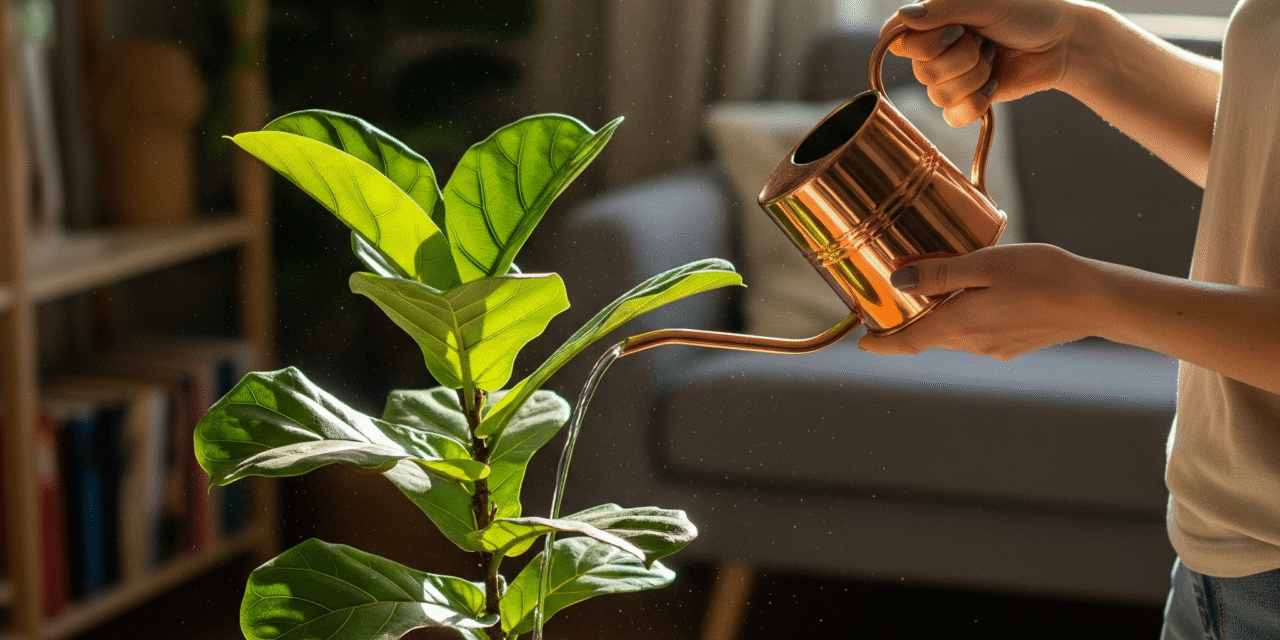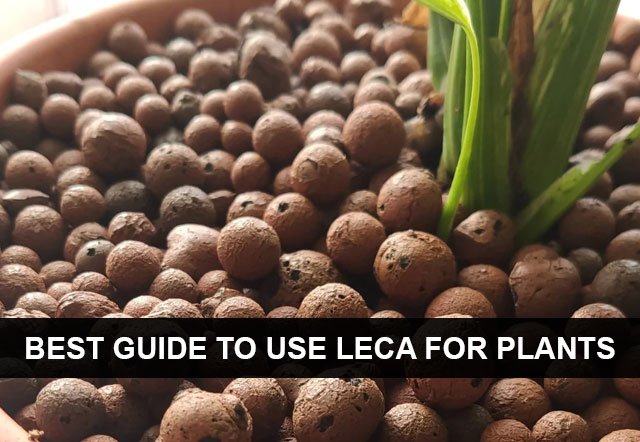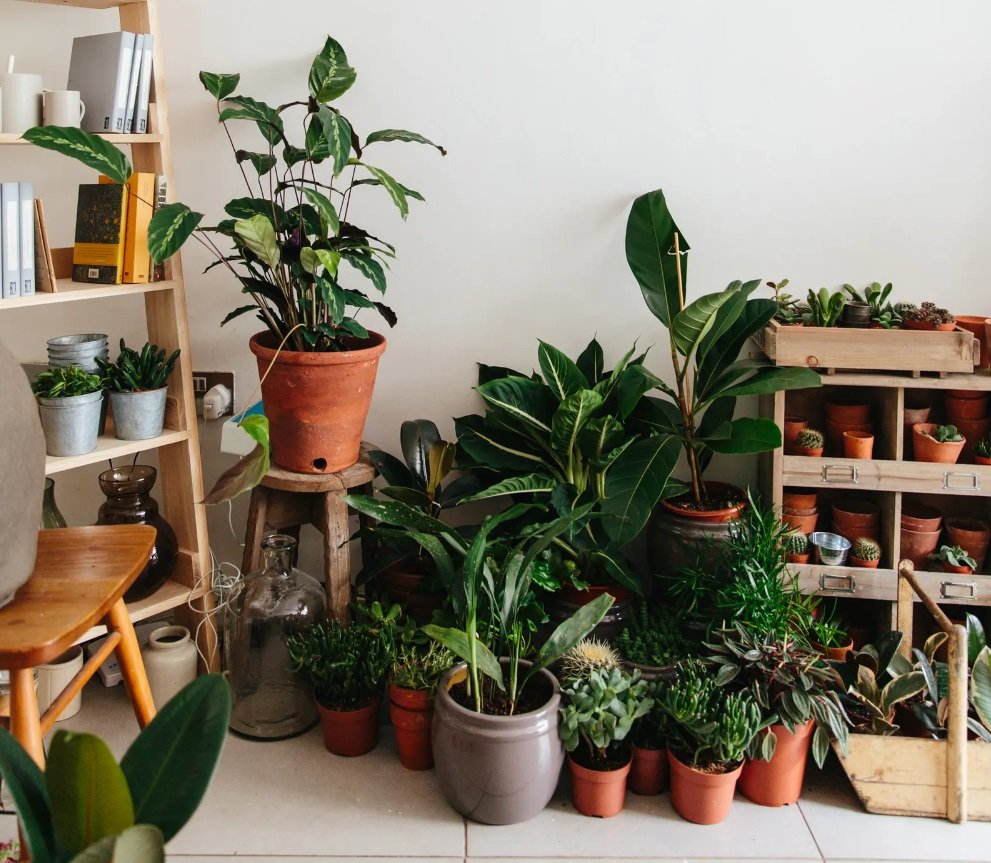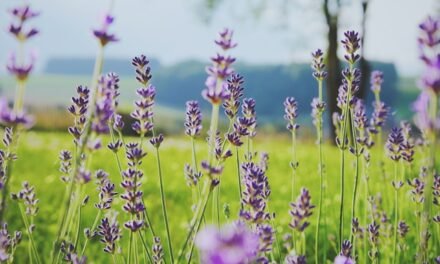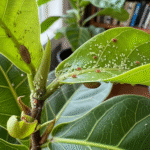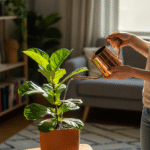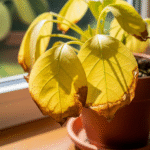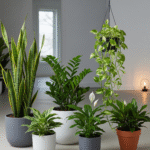Caring for houseplants can be deeply rewarding, but one of the most common challenges plant care enthusiasts face is figuring out the right watering schedule. Watering too little can cause wilting and stunted growth, while overwatering can lead to root rot and pests. The truth is, there isn’t a single answer that applies to every plant. Instead, watering frequency depends on several factors, such as plant type, pot size, soil composition, light exposure, and even the climate of your home.
In this article, we’ll explore how often you should water your houseplants, the signs of under and overwatering, and tips for maintaining a healthy watering routine.

The Importance of Proper Watering
Watering correctly is one of the most crucial aspects of plant care. Without the right balance of water, houseplants struggle to absorb nutrients, perform photosynthesis, and maintain their natural growth cycle. Too little water leaves them weak and dehydrated, while too much water suffocates their roots and leads to rot. Developing a proper watering routine ensures your plants remain strong, vibrant, and long-lasting.
Proper watering also helps prevent common issues like yellowing leaves, fungal growth, and pest infestations. By paying attention to soil moisture and adjusting to each plant’s unique needs, you can create a healthier environment for them. Good plant care means recognizing that watering is not about frequency alone but about consistency, observation, and understanding the conditions that help your plants thrive.
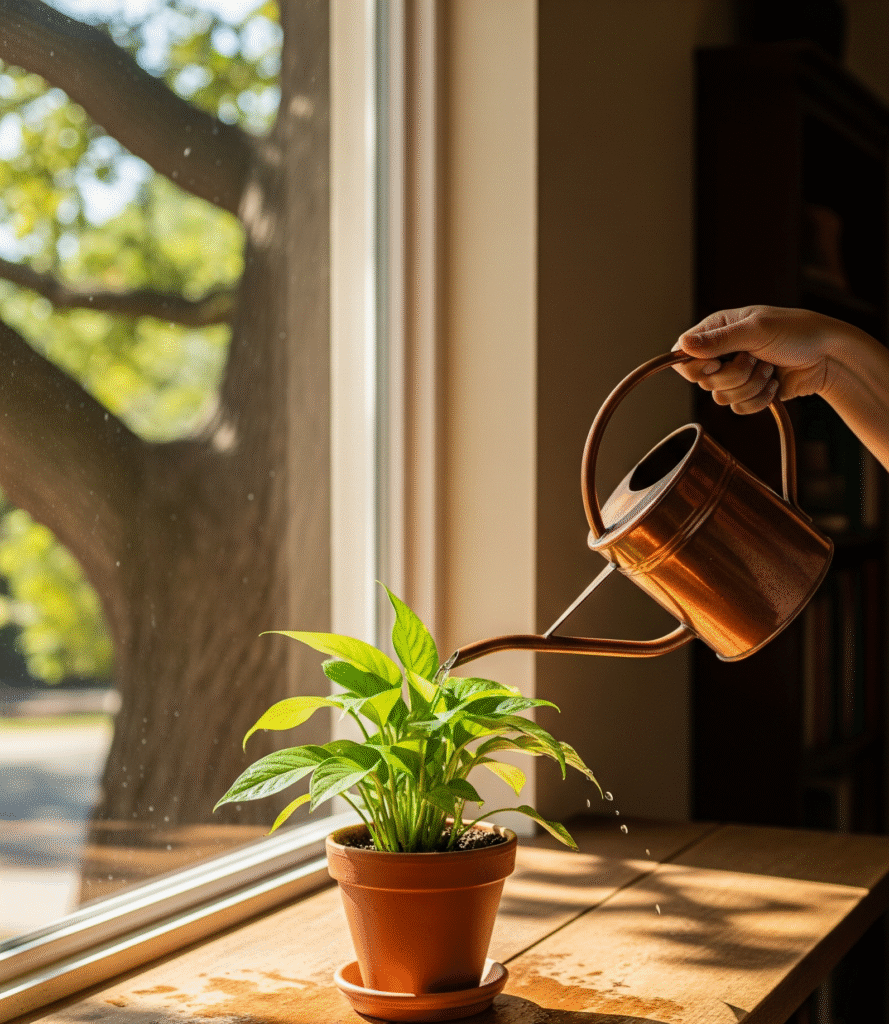
General Watering Guidelines
When it comes to plant care, there is no single watering schedule that fits all houseplants. A general rule is to water when the top inch of soil feels dry to the touch. Most common indoor plants need watering every 7–10 days, but this can vary depending on the type of plant, pot size, and environment. Always check the soil before adding water instead of relying on a fixed schedule.
Another helpful approach in plant care is to water thoroughly until excess water drains from the bottom of the pot. This ensures that moisture reaches the roots instead of just wetting the surface. Avoid shallow watering, as it can lead to weak root systems. By focusing on soil condition and plant type, you can establish a balanced routine that keeps your houseplants healthy and flourishing.

Plant Type Matters
Different plants have unique watering needs, making this an important factor in plant care. Tropical varieties like ferns, calatheas, and peace lilies prefer consistently moist soil and often need more frequent watering. On the other hand, succulents, snake plants, and cacti thrive in drier conditions and require water only after their soil has completely dried out. Understanding a plant’s natural habitat helps you mimic the right conditions indoors.
In effective plant care, it’s essential to research each plant’s preferences before setting a watering routine. Flowering plants may demand more hydration to support blooms, while slow-growing foliage plants generally need less. Grouping plants with similar needs can also simplify watering schedules. By tailoring your approach to each plant type, you’ll avoid common mistakes and encourage healthier, stronger growth.
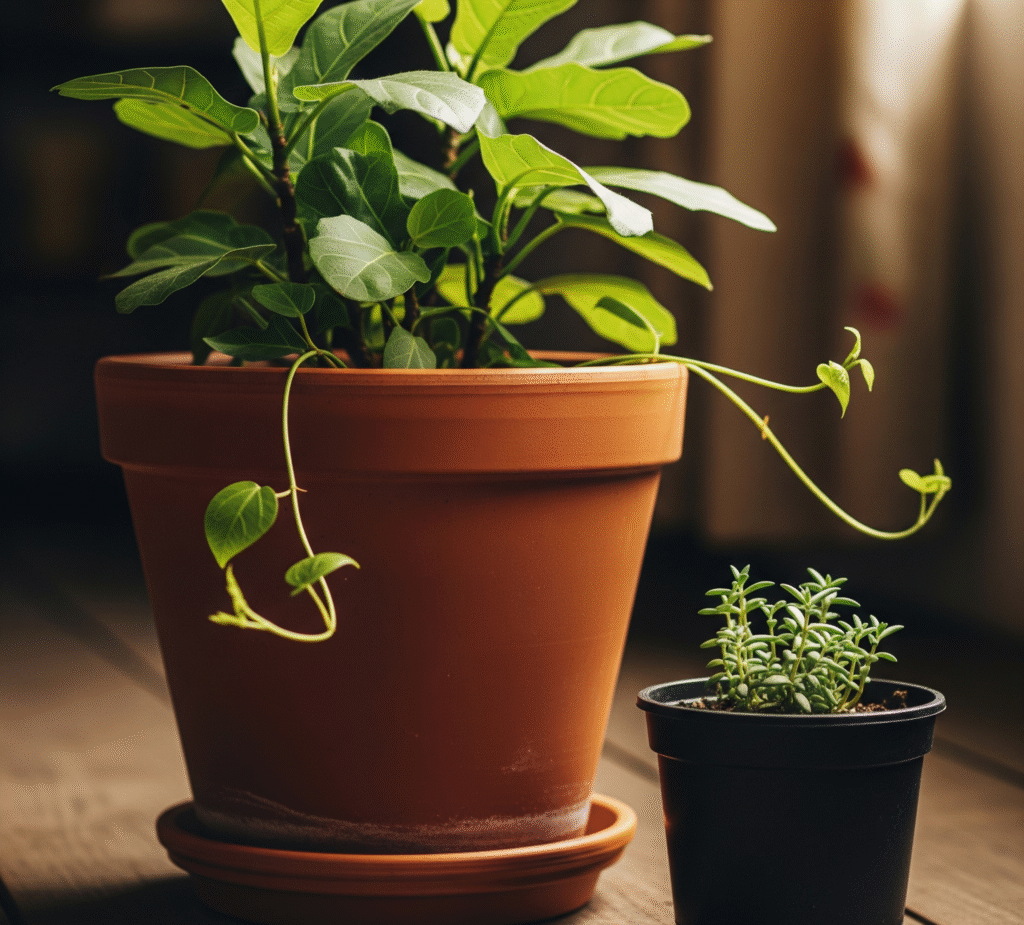
The Role of Pot Size and Material
Pot size and material play a big role in how often your plants need watering, making them key considerations in plant care. Smaller pots dry out faster because they hold less soil, while larger pots retain moisture for longer periods. This means a plant in a tiny container may need water more frequently compared to the same plant in a bigger pot.
The material of the pot also affects watering needs in plant care. Terracotta and clay pots are porous, allowing water to evaporate quickly, which benefits plants that prefer drier soil. Plastic or ceramic pots, however, hold in moisture for longer, making them better for plants that like consistent hydration. Choosing the right pot helps maintain a balanced watering routine tailored to your plant’s needs.
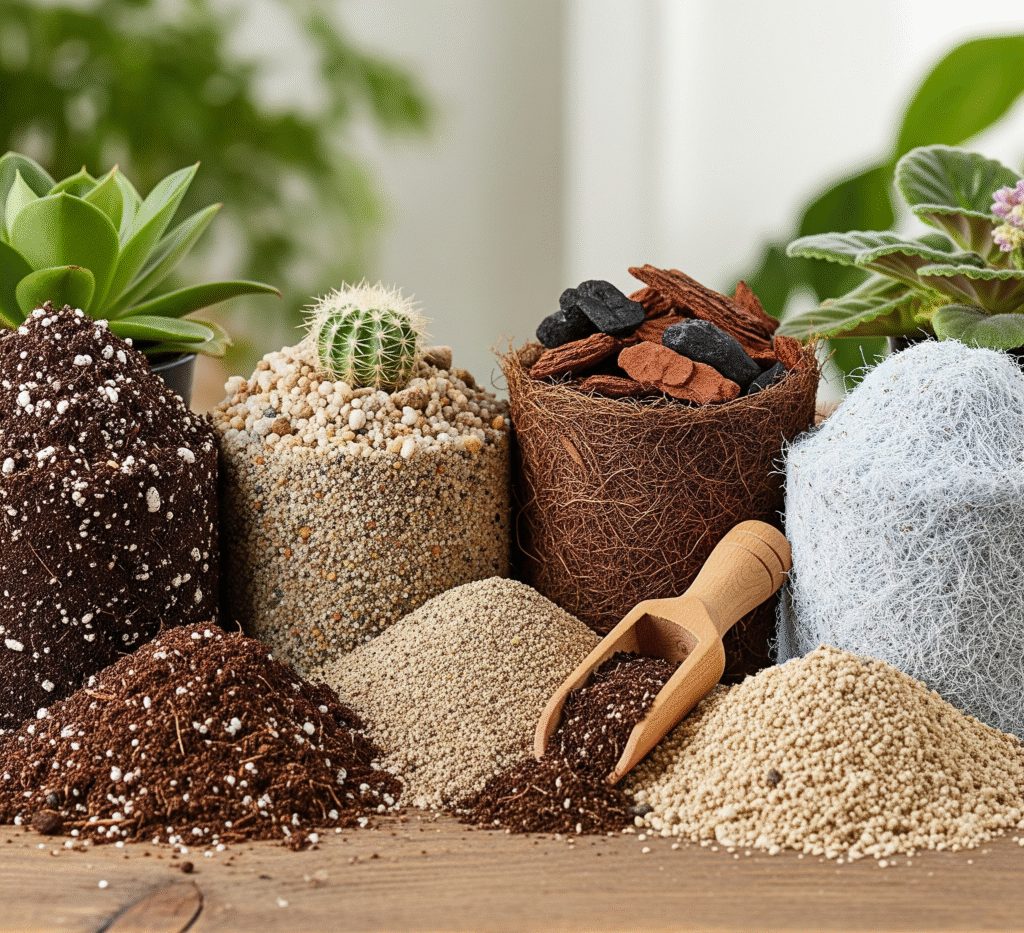
Soil Composition
Soil composition is a critical factor in plant care because it directly influences how well water is absorbed and retained. A light, well-draining mix with sand, perlite, or bark allows excess water to escape, preventing root rot in plants like succulents and cacti. In contrast, moisture-retentive soils with ingredients like peat moss or coco coir are better suited for tropical plants that thrive in consistently damp conditions.
Paying attention to soil quality ensures more effective plant care, as it helps you match the medium to your plant’s natural needs. Using the wrong soil can lead to overwatering or underwatering, even if your watering habits are correct. By selecting the proper soil blend, you create an environment that promotes healthy roots and makes maintaining the right moisture balance much easier.
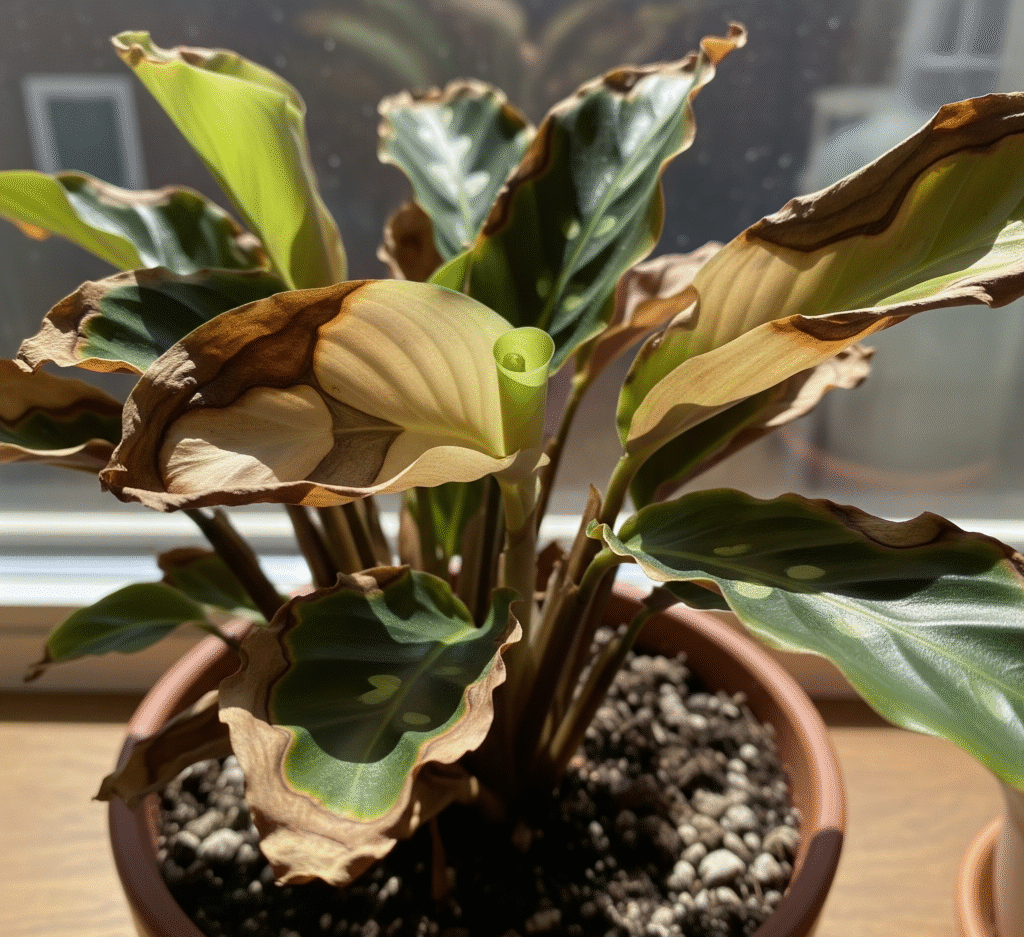
Environmental Factors
Environmental conditions such as light, temperature, and humidity greatly impact how often your houseplants need water, making them essential to good plant care. Plants placed in bright, warm rooms tend to dry out more quickly compared to those in cooler, shaded spaces. Similarly, during hot summer months, soil loses moisture faster, while in winter, plants usually require less frequent watering.
In plant care, it’s important to observe how your home’s environment affects your plants’ needs. Air conditioning and heating systems can create dry air, causing soil and leaves to lose moisture more rapidly. Adjusting your watering routine to match these conditions ensures that your plants remain balanced and healthy, regardless of seasonal or room changes.
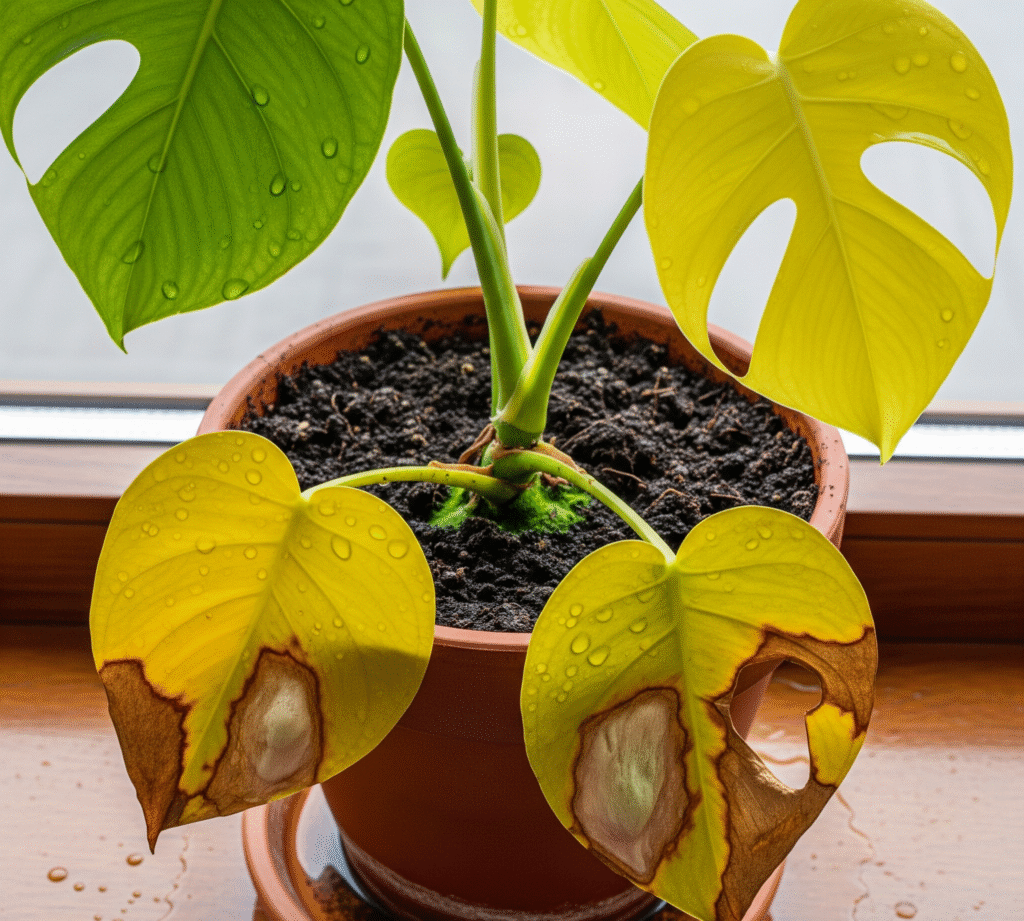
Signs of Overwatering
One of the most common mistakes in plant care is giving houseplants too much water. Signs of overwatering include yellowing leaves, soggy soil, and plants that look wilted even though the potting mix is wet. In severe cases, you may notice a foul odor from the soil, indicating root rot has already begun. These symptoms are a clear warning that your plant is receiving more water than it can handle.
Good plant care means recognizing these early signals and taking quick action. Allow the soil to dry out before watering again, and make sure your pots have proper drainage to prevent standing water. Adjusting your watering habits not only prevents long-term damage but also helps restore your plant’s health and vitality.
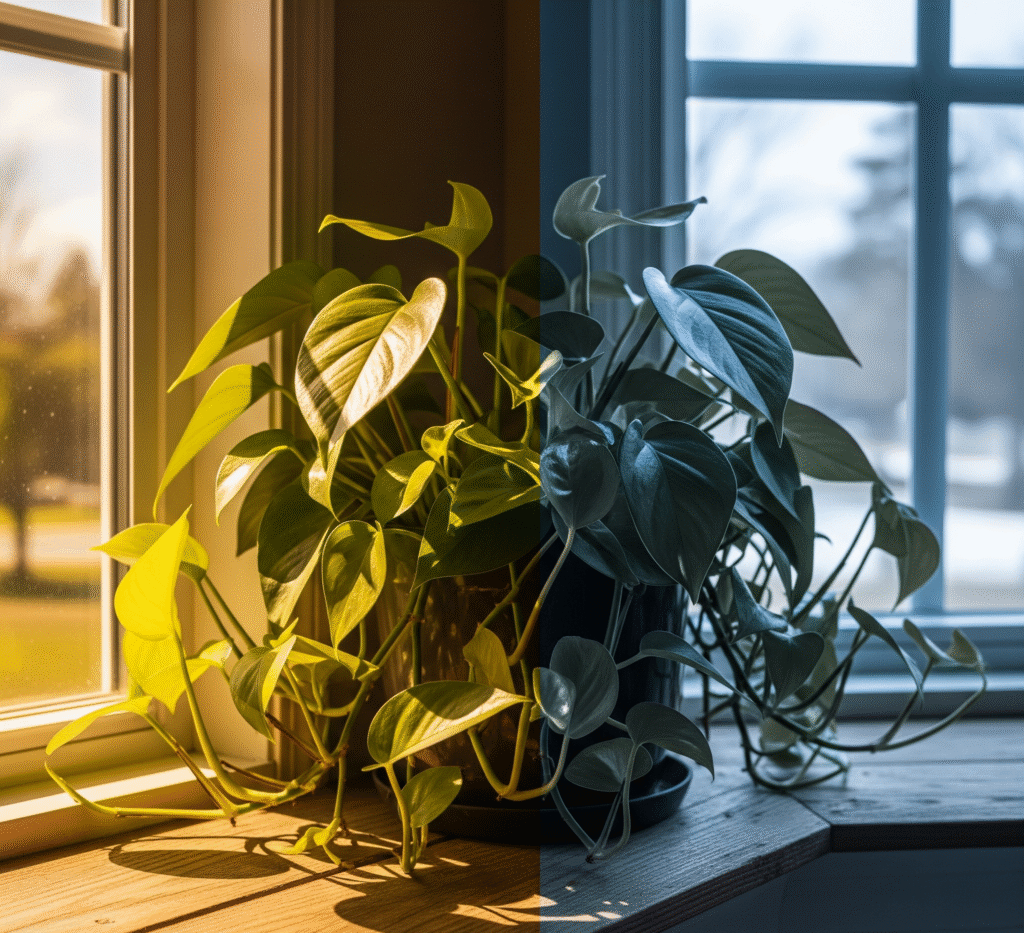
Seasonal Watering Adjustments
Seasonal changes play a big role in determining how much water your houseplants need, which is a key aspect of plant care. During spring and summer, most plants enter their active growing phase and require more frequent watering to support new leaves and flowers. The warmer temperatures also cause soil to dry out faster, making consistent checks necessary.
In fall and winter, however, good plant care involves reducing watering as many houseplants slow their growth or enter dormancy. Cooler indoor conditions and lower light levels mean the soil stays moist longer. Adjusting your watering schedule with the seasons prevents both overwatering in winter and underwatering in summer, helping your plants stay balanced year-round.
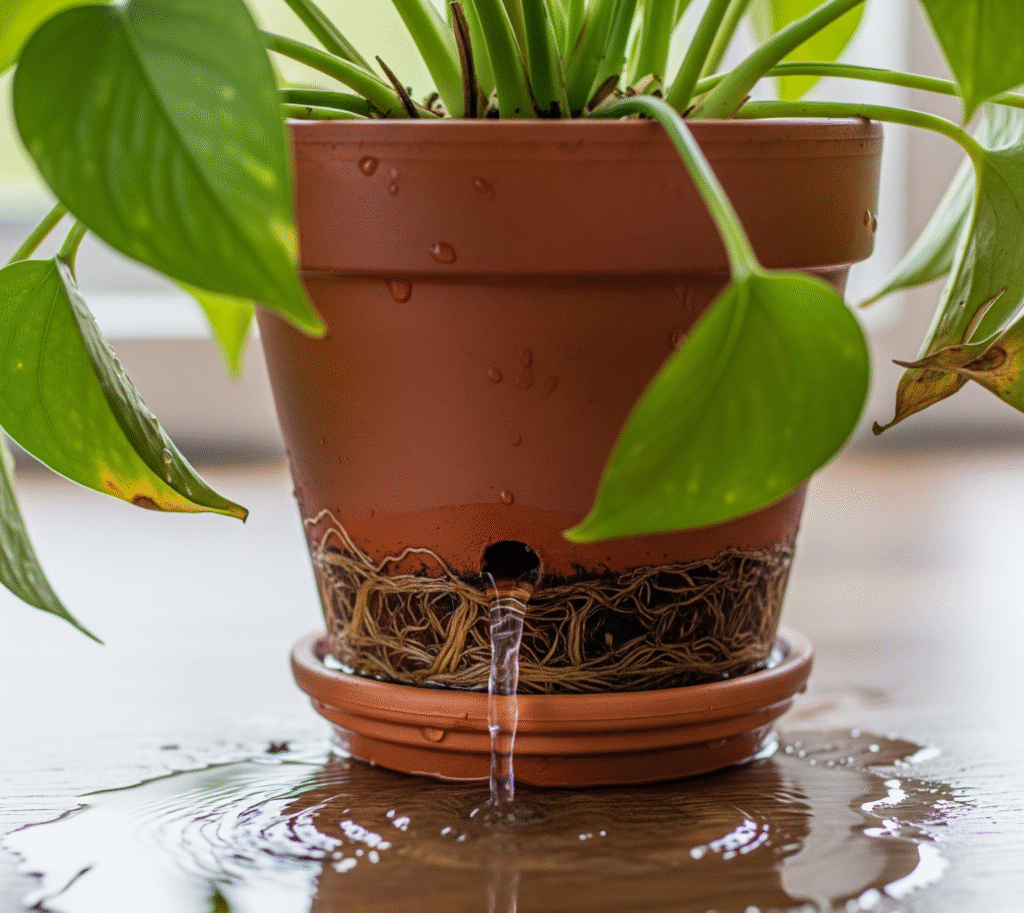
The Importance of Drainage
Proper drainage is one of the most vital parts of plant care, as it ensures that excess water does not remain trapped in the pot. Without drainage holes, water collects at the bottom, leading to root rot and other harmful conditions. Even with careful watering, poor drainage can suffocate roots and prevent them from absorbing the oxygen they need to stay healthy.
In effective plant care, it’s also important to check that saucers or trays beneath pots are emptied regularly to avoid standing water. Using well-draining soil and choosing pots with adequate holes helps maintain the right moisture balance. Good drainage encourages strong root growth, making your houseplants more resilient and less prone to disease.
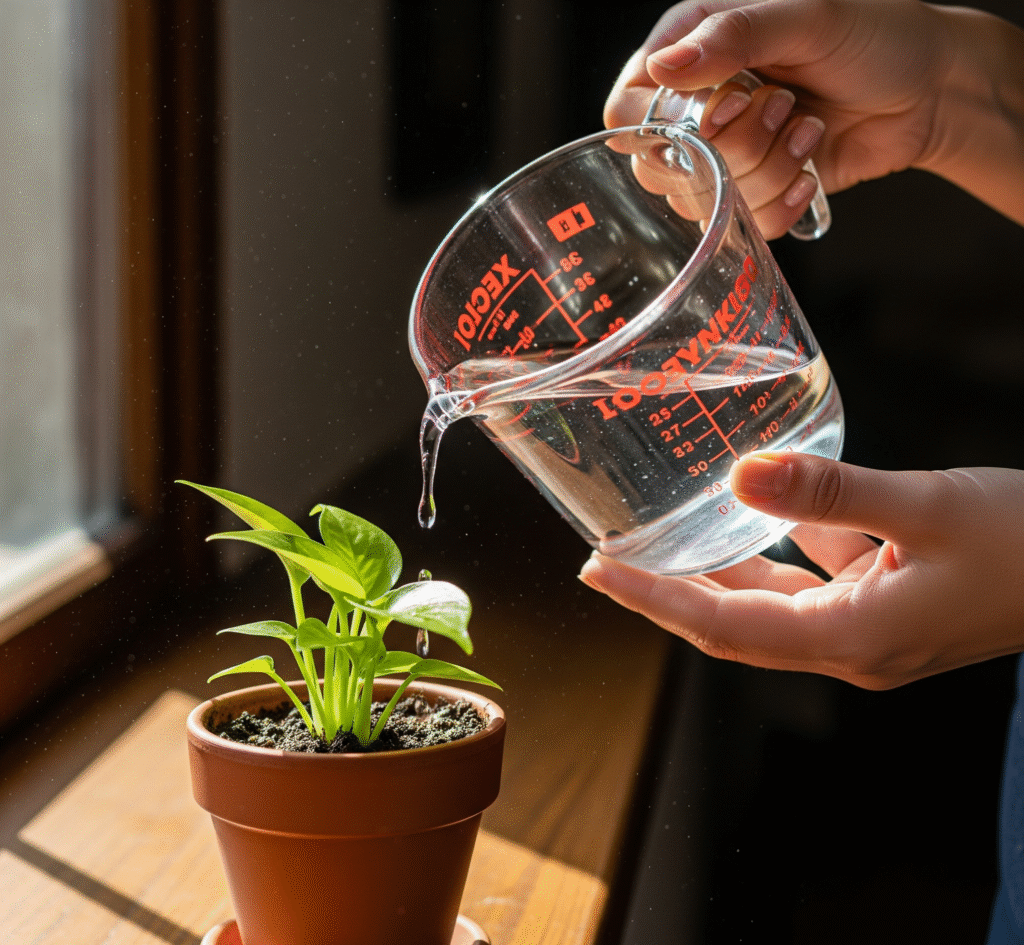
How Much Water to Use
Knowing how much water to give is just as important as knowing when to water in proper plant care. A light sprinkle often only wets the surface, leaving the deeper roots dry and weak. Instead, it’s best to water thoroughly until excess water drains from the bottom of the pot, ensuring the entire root system gets the hydration it needs.
In daily plant care, deep watering helps encourage stronger, healthier roots that can support long-term growth. Shallow watering, on the other hand, leads to roots staying near the soil’s surface, making plants more vulnerable to stress. By giving the right amount of water, you create a stable environment where your houseplants can thrive.
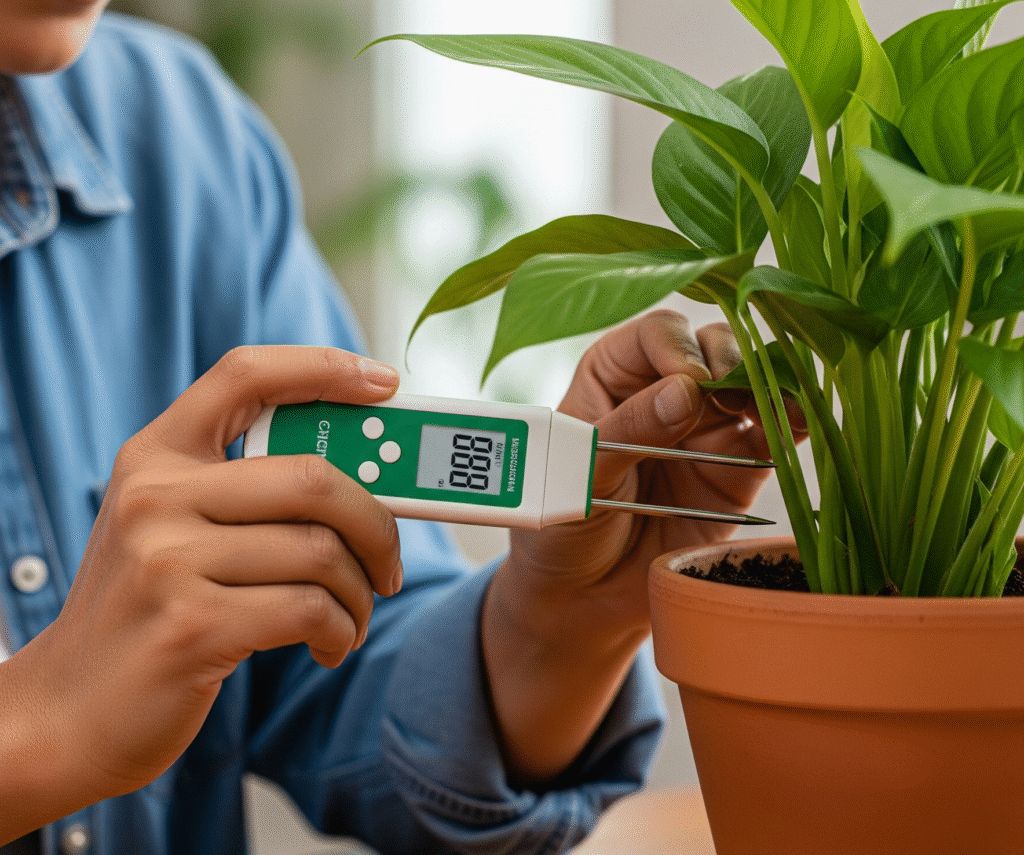
Using Moisture Meters
Moisture meters can be a helpful tool in plant care, especially for beginners unsure of when to water. These devices measure the soil’s moisture level and give you a clear indication of whether your plant needs hydration. By relying on a moisture meter, you can avoid common mistakes like watering too frequently or waiting too long.
In effective plant care, moisture meters serve as a guide rather than a strict rule. They help you understand the specific needs of different plants, from succulents that prefer dry soil to tropical varieties that enjoy consistent moisture. Using this tool along with visual cues, such as leaf health and soil texture, ensures more accurate watering decisions.
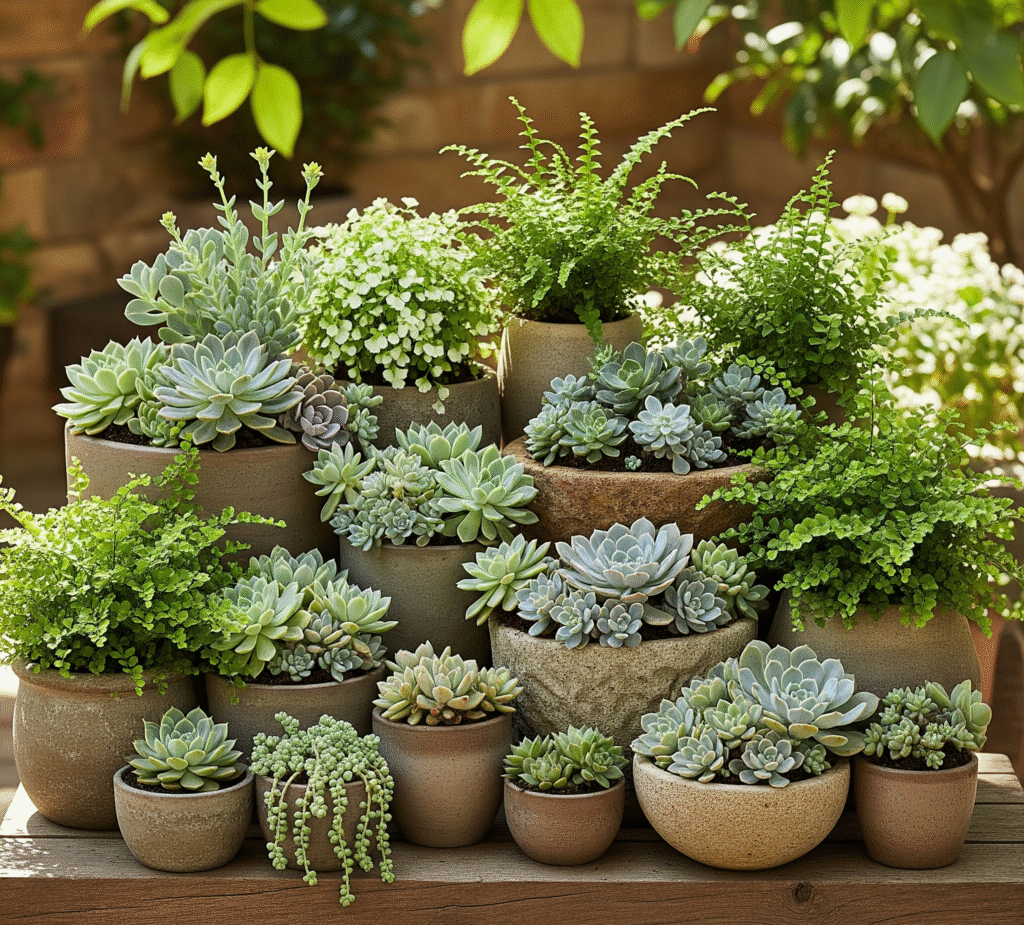
Grouping Plants with Similar Needs
Grouping plants with similar watering requirements is a smart approach to plant care. By placing drought-tolerant plants like succulents and cacti together, you can easily manage their dry-soil preferences without risking overwatering. Likewise, keeping tropical plants such as ferns and calatheas in one area allows you to maintain higher moisture and humidity levels more effectively.
This method of plant care also simplifies your routine, making it easier to monitor and water plants consistently. Instead of juggling different schedules for each plant, you can tend to groups based on their shared needs. This not only saves time but also ensures each plant receives the right balance of care, reducing stress for both you and your houseplants.
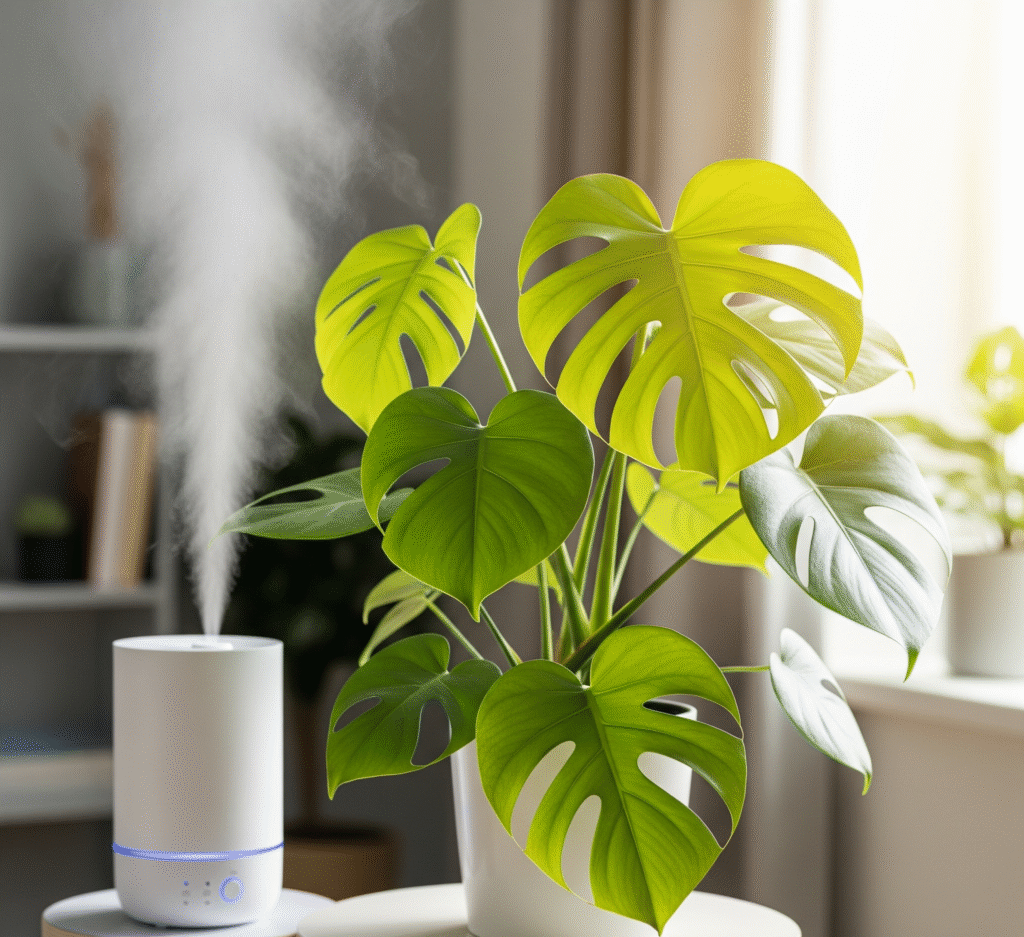
The Role of Humidity
Humidity levels play a big role in plant care, especially for tropical houseplants that naturally thrive in moist environments. Low indoor humidity, often caused by heating or air conditioning, can lead to dry leaves, brown edges, and faster soil evaporation. Maintaining proper humidity helps reduce stress on plants and keeps their foliage lush and vibrant.
Good plant care often involves boosting humidity through simple methods like misting leaves, using a humidifier, or placing pots on pebble trays filled with water. Grouping plants together can also create a more humid microclimate. By balancing watering with proper humidity, you create healthier conditions that mimic a plant’s natural habitat, encouraging steady growth.
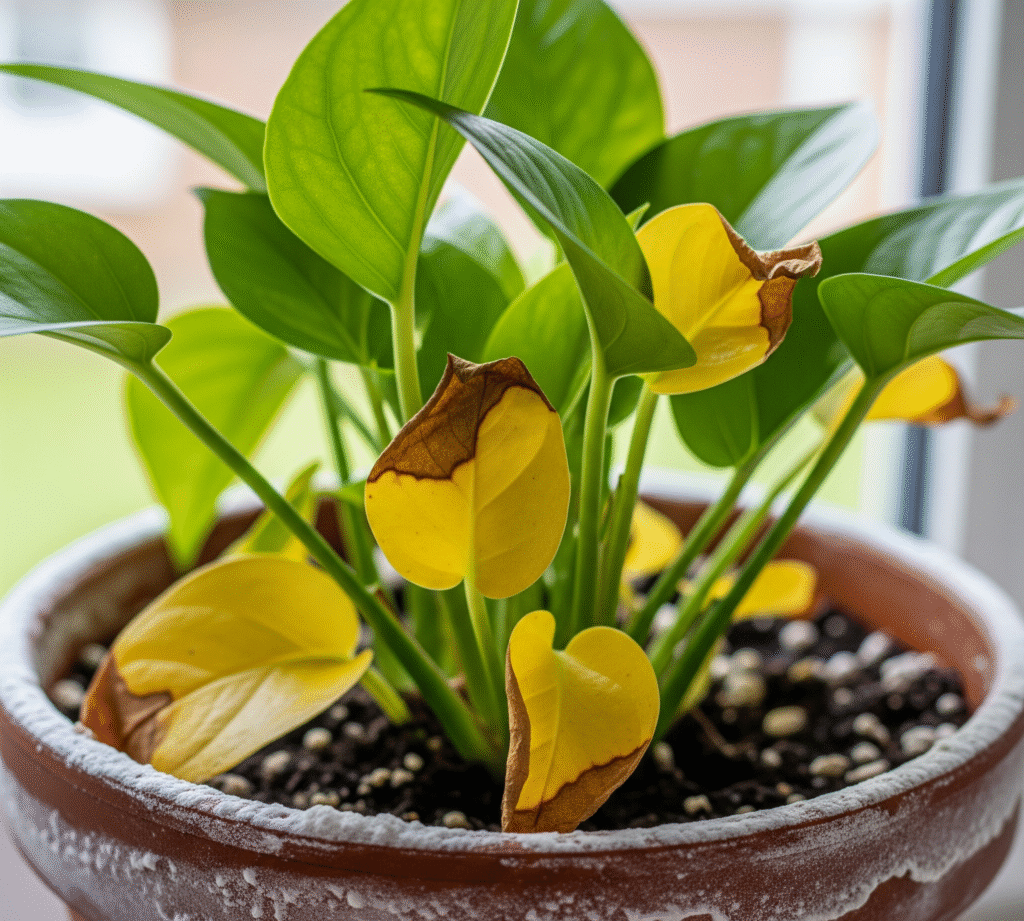
Water Quality Matters
Water quality is an often-overlooked part of plant care, but it can greatly affect your houseplants’ health. Tap water containing chlorine, fluoride, or high mineral content may cause leaf tips to brown or yellow, especially in sensitive plants. Allowing tap water to sit overnight before use helps chemicals dissipate, making it safer for your plants.
In thoughtful plant care, many people choose alternatives like rainwater, filtered, or distilled water to provide the cleanest hydration. These options reduce the risk of chemical buildup in the soil and promote stronger growth. Paying attention not just to how much you water, but also to the quality of the water, ensures your houseplants thrive in the long run.
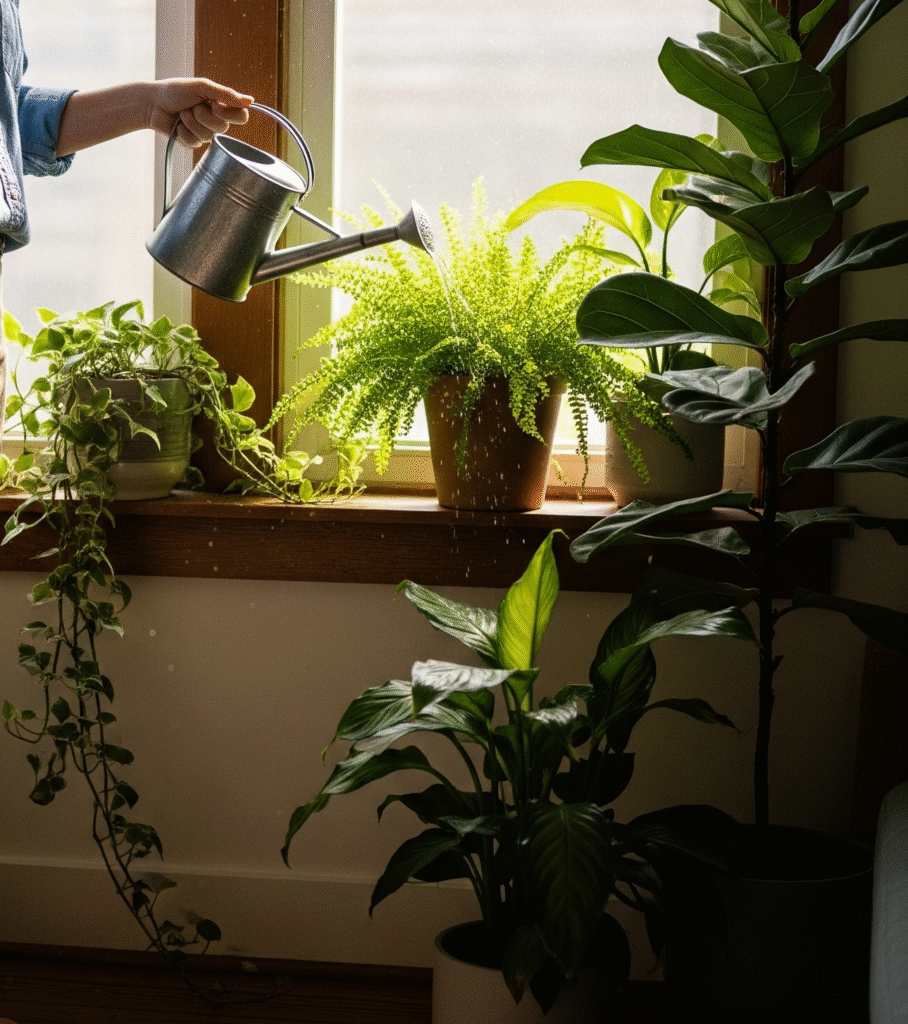
Developing a Routine
Creating a consistent watering routine is an important part of successful plant care. Checking your plants at the same time each week helps you monitor soil moisture, leaf condition, and overall health. This habit prevents both neglect and overwatering, giving you a clearer picture of what each plant truly needs.
In plant care, a routine doesn’t mean sticking to a strict schedule for all plants, but rather observing their individual requirements. Some may need water twice a week, while others thrive with less frequent attention. By developing a rhythm based on observation, you ensure that your houseplants stay balanced and continue to grow strong.
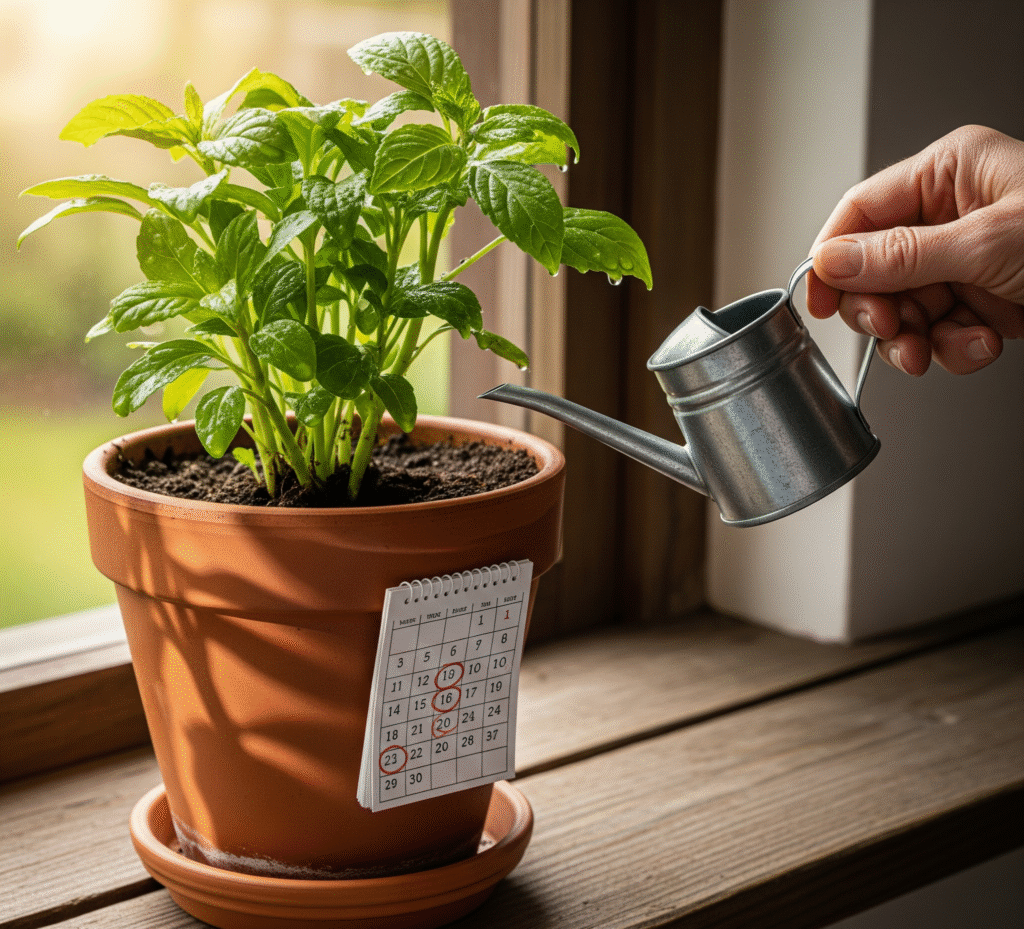
Common Myths About Watering
There are many myths about watering that can confuse even the most dedicated plant care enthusiasts. One common belief is that all houseplants need to be watered on a strict schedule, like once a week. In reality, different plants have different needs, and watering should always depend on soil moisture and environmental conditions, not just a calendar.
Another frequent myth in plant care is that misting can replace watering. While misting can help increase humidity for tropical plants, it does not provide enough hydration for the roots. Similarly, some people think adding extra water “just in case” is harmless, but this often leads to overwatering. Understanding and avoiding these misconceptions helps you care for your plants more effectively.

